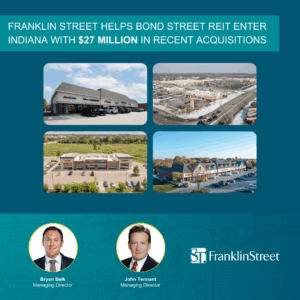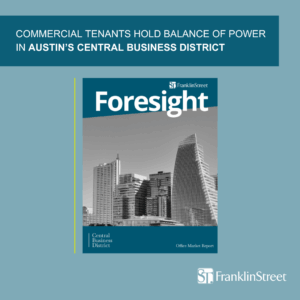Market conditions in the Southeast apartment market are attracting investors that are circling opportunities, and the competition for yield-seeking assets is intensifying across the region.
Any concern among multifamily professionals that the bloom might be about to come off the rose in the apartment market was put to bed during the first half of 2014 thanks to strong acquisition activity from a multitude of investors in core, secondary and tertiary markets. Property and portfolio sales topped $26 billion during the second quarter of 2014, a 39 percent year-over-year increase based on deals $2.5 million and higher, according to Real Capital Analytics (RCA).
For the first half of 2014, acquisition volume totaled $45.6 billion, down 9 percent from a year ago but still impressive considering the sizeable Archstone portfolios included in transaction totals for the first half of 2013. That’s not to say the blockbuster deals have ended. Included in the 2014 second-quarter total is Essex Property Trust’s $4.3 billion acquisition of BRE Properties.
Excluding the effects of portfolios and entity transactions, volume gains are still strong, up 25 percent year-over-year for the first half of 2014, according to the RCA. Investors remain bullish on the apartment market because of high consumer demand, which is expected to grow stronger because of the uptick in job growth nationally.
The U.S. Bureau of Labor Statistics reports that employers added between 2 million and 2.5 million jobs annually in 2012 and 2013. According to Ron Witten, founder of Dallas-based apartment market advisory services firm Witten Advisors, a consensus forecast calls for a net gain of 2.6 million jobs in 2014 and 2.8 million in 2015. The Southeast is part of that narrative with strong employment growth evident in key markets.
“When we look at the Southeast, Raleigh, Orlando and Charlotte are three of the top 10 cities in the nation in terms of population growth between 2010 and 2013. There is both population growth and job growth,” says J.M. Schapiro, principal of Continental Realty Corp., a Baltimore-based multifamily investment firm focused on value-add acquisitions. In 2013, Continental Realty invested $45 million in multifamily acquisitions, and the company has invested $80 million so far in 2014.
On the consumer side, demand for apartments nationally and in the Southeast is driven by the Millennials (or Generation Y), whose lifestyle focus is on mobility and convenience rather than on building home equity. According to Malcolm McComb, vice chairman of CBRE, their wish list includes being at the center of the city, close to work, near restaurants and nightlife, close to parks/recreation areas and access to mass transit. As the population of Millennials grows, it’s important for the apartment market to cater to the list.
“The Gen Y effect is so powerful. Today they represent 34 percent of the workforce. In 11 years, they’ll be 75 percent of the workforce,” said McComb while speaking at the August 2014 Atlanta Apartment Association Apartment Market Outlook on Aug. 8 in Atlanta.
The trend of Millennials choosing to rent rather than own has been a game changer for the apartment industry because it’s a paradigm shift in the makeup of the renting population, according to multifamily investors and developers.
“The lifestyle renter has shown up, which we haven’t had. Normally renters are out of necessity or transitional,” says Byron Cocke, founding principal and co-CEO of Cocke, Finkelstein Inc. (CFI), an Atlanta-based multifamily investor and developer. CFI owns approximately 11,000 apartment units in the Southeast and Midwest.
“People are now making the decision to rent in a city. That’s a significant shift,” says Cocke.
With the rise in people making the decision to rent, homeownership is suffering across the country. Homewownership rates are currently at an 18-year low, according to data from the U.S. Census Bureau. The second-quarter rate of 64.7 percent is the lowest rate seen since 1995.
Strong Competition
High consumer demand is helping boost interest from a large pool of investors; Institutions, real estate investment trusts (REITs), private equity firms and local and regional investors are all active in the market.
“If a deal is priced well, we see significant activity and competition among buyers,” says Darron Kattan, managing director of Franklin Street Real Estate Services‘ Tampa office. “In the Class A arena, it’s hyper-competitive with institutional money. In the Class B arena, it’s extremely competitive with the syndicators of the world. In the Class C world, we’re seeing more of the private client and foreign money really step up and become more active and aggressive in buying deals.”
With the 10-year Treasury yield at approximately 2.4 percent as of late August, the low interest rate environment and strong pricing has enabled capitalization rates to compress continuously. Cap rates are trending slightly above 6 percent for apartments across the country, according to RCA. (The cap rate represents the initial yield to an investor based on the purchase price and the property’s annual net operating income.)
“The prices that things are trading at rarely make sense to me,” says DFI’s Cocke. “When prices are treading far in excess of replacement costs, we have naturally migrated from acquisitions to development. You have to move with the opportunities.”
An uptick in pricing due to increased competition and demand has made several investors wary. Like Cocke, Joseph Lubeck, executive chairman of Landmark Apartment Trust, sees a red flag when prices begin to outpace replacement costs.
“We’re being extremely cautious with our acquisitions right now because there are a lot of bidders in the market that we feel like are paying too much or levering too much. Some of this is a result of the current interest rate environment, with low interest-rate loans so widely available to borrowers. It tends to make people pay more for the assets, but we look at the fundamentals and replacement costs and we look to hold for the longer term,” says Lubeck. Landmark Apartment Trust currently owns 25,000 mid-market multifamily units in the Southeast and Texas. An active investor, the non-traded REIT purchased $443 million in apartment investments in the fourth quarter of 2013 alone.
The competitive environment has helped push investors away from Class A properties in core markets into secondary and tertiary markets to chase yield. Even institutions are changing their investment strategy to seek a higher return on investment with products in non-gateway locales.
“We just bid on a deal: a 1980s property with vinyl siding in a Class B area. We were shocked that out of the four top bidders, one was an institution, one was a sponsor with institutional joint venture equity and the third was a public REIT. We were the only private player that was competing,” says Norman Radow, founder and CEO of The RADCO Cos., an Atlanta-based private equity investor of apartment properties. In 2014 alone, RADCO has purchased nine properties for a total investment of $220 million, which includes acquisition and planned capital improvements.
“It shocked us because six months ago, there would’ve been no institutions whatsoever in that space,” says Radow.
Some investment firms are looking for specific requirements on a one-off basis, as opposed to an institution looking to purchase a portfolio. For some of these products that are in suburban markets, the competition is a little less intense.
“We typically don’t have competition from large companies for the assets we look at. We can also buy a much larger asset than a local investor wants to buy,” says Ella Shaw Neyland, president of Steadfast Income REIT and Steadfast Apartment REIT. The recently launched Steadfast Apartment REIT has two properties in its portfolio, including Villages at Spring Hill in Nashville’s Spring Hill submarket.
“We haven’t seen a lot of competition, but having said that in the last year-and-a-half we’re starting to see more. What we thought was once a trade secret about these markets has now become the fodder for The Wall Street Journal,” says Neyland. “The world is starting to discover these markets.”
Hot Markets
The Southeast is an attractive place to invest due to the business-friendly environment, quality of life, low cost of living and job growth in the area. Apartment properties in the Southeast are trading at a great clip to investors seeking strong fundamentals and upside.
“From a market perspective, we’re big fans for the Southeast. We like the business conditions here and we like the growth in population that we’re seeing, and we feel like the future in job growth is going to be in the Southeast. That bodes well for us as owners of multifamily rental real estate,” says Lubeck of Landmark Apartment Trust.
In terms of acquisitions, Atlanta leads all other Southeastern cities with $1.9 billion invested in the first half of 2014, according to RCA. The first-half total represents an 8 percent increase compared with the same period a year ago.
“We really are in the golden era of the apartment business in Atlanta. It took us a little longer to get here with our recovery compared to some other markets nationally,” said Witten of Witten Advisors at the closing panel of the Atlanta Apartment Association outlook event. “We’ve gone from Atlanta being a city with a great future to a great performer today. It was lagging in terms of job growth and in terms of new construction, but I’m happy to report that’s no longer the case.”
Atlanta is the No. 7 metropolitan area nationally in terms of dollars invested in apartment acquisitions in the first half of the year, only being outranked by Los Angeles, Manhattan, New York City’s other boroughs, Dallas, Houston and Seattle. The only other Southeastern cities cracking the top 20 are No. 15 Tampa ($852 million) and No. 18 Washington, D.C. ($696 million), according to RCA.
One of the many Atlanta transactions in the first half of 2014 included CFI’s purchase of The Park at Vinings in the Atlanta neighborhood of Vinings in Smyrna, Georgia The company purchased the 484-unit asset, which was 97 percent occupied at the time of the sale, for $49.5 million.
Besides the major metropolitan markets in the Southeast, investors are seeking yield in tertiary markets where the competition is certainly increasing.
“Investors are now taking properties in secondary and tertiary markets very seriously,” says Josh Goldfarb, founder of Multi Housing Advisors, an apartment brokerage firm founded in 2002. “The popularity of multifamily is such that properties in those markets are trading at handsome prices with aggressive returns.”
One of those burgeoning areas is South Carolina. RADCO recently entered into the South Carolina market with the $11 million purchase of two apartment communities in Anderson. Radow says that the transactions were in line with the company’s investment strategy, even though Anderson isn’t a market where RADCO has an existing footprint.
“South Carolina is a right-to-work state, a low tax state, pro-business state and it has the largest per capita international investment and new jobs in the country. Anderson is an ‘exurb’ of Atlanta,” says Radow. “We target markets where jobs are improving. Once we’re there, we like them even more when we see what can happen when we manage well.”
Is now a better time to buy or sell multifamily properties?
In addition to the growth in demand from Millennials, another game changer for the apartment industry is the availability of capital. The amount of available debt and equity has opened up the floodgates for investors that were sitting on the sideline during the downturn and the subsequent recovery.
“Multifamily is the recipient right now in a global search for yield,” says McComb of CBRE. “There is capital right now for all points of the market – from Class A to Class C – and that wasn’t always the case even a few years ago.”
Because of the availability of capital for borrowers and the low interest rate environment, many commercial real estate professionals feel like now is a great time to buy.
“It’s a great time to be a net buyer because there’s a lot of growth in the market,” says Steven DeFrancis, CEO of Cortland Partners, an Atlanta-based multifamily investor and developer. Cortland Partners acquired nearly $1 billion in apartment assets in 2013 and is on pace to achieve just under that total this year.
“NOI growth is continuing to out-pace inflation because demand growth right now is a once-in-a-generation type of growth,” says DeFrancis.
“It’s a great time to be a buyer because there’s so much capital available,” adds RADCO’s Radow. “Rates are cheaper and the number of lenders has increased. When we started this business model three years ago, even with our 17-year reputation at the time, we had trouble getting debt.”
On the other hand, the increase in the number of buyers and the availability of acquisition capital suggests that it may be a better time to be a net seller of apartment properties.
“It’s easier to be a seller because of the larger pool of buyers, debt is more readily available, there’s certainly plenty of equity out there,” says Schapiro of Continental Realty Corp. “It’s an easier time to be a seller, but it doesn’t mean you can’t find a good buy.”
There’s no questions it’s a better time to be a net seller,” adds Goldfarb of MHA. “There’s just no question about it. In the last three or four years, because of the appreciation or the fact that if you bought before the downturn, at this point we’ve seen enough rise in values that the loss that you may have taken, either through cash flow or value, has now returned to the point where you’re not on par with where your investment may have been in 2007. Being a net seller is clearly a great spot to be in if you acquired anything in the past 10 years.”
What’s keeping several multifamily investors from selling their assets, despite the great environment to sell, is that the apartment market is still improving. As real estate fundamentals continue to improve, owners will see more revenue. That trend doesn’t encourage disposition. According to Witten Advisors, effective rent growth in the U.S. apartment market was 3.4 percent in the second quarter of 2014 on a year-over-year basis.
“The market is moving and we’re seeing real rent growth and real occupancy growth that cannot be attributed to just our strategy,” says Radow. View PDF



